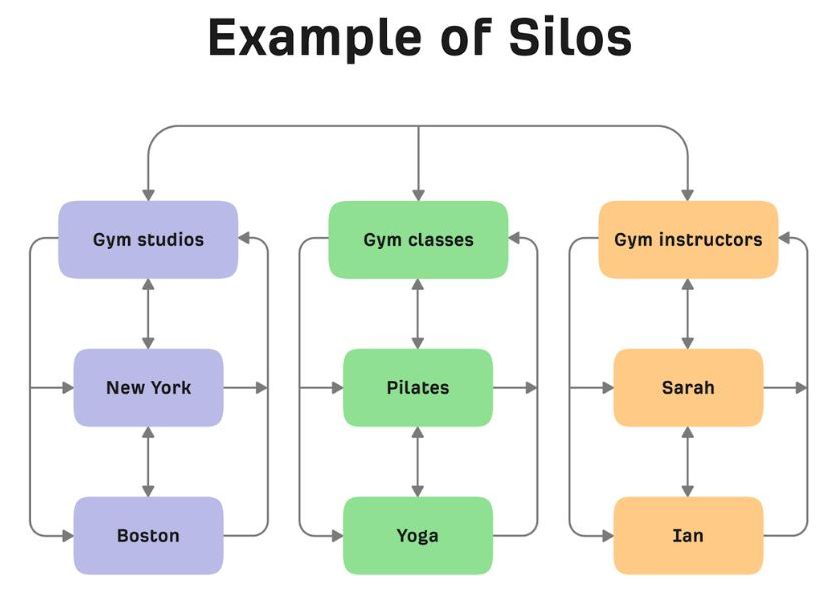What is an SEO silo structure? If you’re like many people, you might have heard the term thrown around in casual conversation but aren’t entirely sure what it means and why it’s important to your website (or even if it affects you). An SEO silo structure refers to the way your website is organized so that it can be easily crawled and indexed by search engines.
What is SEO silo structure?
SEO silo structure is one of the most important and impactful changes you can make to your website. Allowing search engines to categorize content by topic allows them to more easily find and rank pages. It also helps visitors find what they are looking for faster, leading to higher conversion rates.
How does it work?
Imagine a pile of clothes on the floor. You’re sorting them into piles based on color — blue, green, red, etc. If someone picks up a pair of pants and asks where they might find other clothes like this, you’ll be able to quickly tell them which pile they need to look in. Similarly, if someone looks at your site in Google and searches red, the page with information about red dresses will appear near the top.

Now imagine that there were no categories set up — when the visitor searched for red, the only thing that would show up is articles about red. In order to find what they were looking for, visitors would have to scan through dozens of irrelevant articles before finding something relevant.
LEARN: What is Skyscraper Technique in SEO and how to do it right?
Benefits of an SEO Silo Structure:
An SEO silo structure improves your website’s ranking in search engines by organizing all the content on your site in a single, logical, hierarchical order. This way, you can make it easier for people to find what they’re looking for and improve your site’s performance.
The ultimate goal of having an SEO silo structure is to produce more high-quality pages that are relevant to a specific topic. In order to ensure that each page is as high quality as possible, it should include:
- high-quality copywriting with keywords;
- detailed descriptions of the benefits of your products or services;
- expertise in this area;
- information about how to contact you if needed; and
- a clickable CTA.
If these components are present on every page, then you will increase the chances of people finding exactly what they need without getting frustrated from sifting through irrelevant information.
LEARN: What is link farming in SEO? You may have heard of it, but what exactly is it?
How to implement an SEO silo structure?
There are many steps to take in order to make your website more search engine-friendly and help it rank better in search engine results pages (SERPs). One important step is ensuring that your content has been properly optimized with a silo structure.
A silo structure can be used as a way of organizing any type of content on your site, whether it’s blog posts or product descriptions. The goal is to divide the content up into categories so it will be easier for people searching online to find what they’re looking for and increase your website’s ranking in SERPS.
The best part about this process is that you don’t have to start from scratch: you can use WordPress plugins such as Yoast SEO and All-in-One SEO Pack to create the layout and ensure everything is formatted correctly so all you have left to do is focus on creating new content!
Different types of SEO silo structures:
An important part of any website or webpage’s design is its layout. The layout, also called the silo structure, can dramatically impact how well a site ranks in search engines. There are two different types of silo structures that you can choose from:
- Internal; and
- External.
Internal silos have all the pages on your site linked to each other by creating hyperlinks to one another in the body of text. External silos will link to extenal sites with links pointing back to your site. External silos require more work because you need to create links outside of your site and keep those links up-to-date when the extenal sites change.
LEARN: What’s the difference between backlink and referring domain?
Which type of SEO silo structure is right for your website?
There are two types of SEO silo structure: Internal and External. An internal silo structure occurs when you have a page with a link at the bottom that directs users to another page. An external silo structure usually occurs when you have a separate domain or subdomain that links to other pages on your site (e.g., blog posts).
If you use an external silo structure, it’s important to remember that each post needs its own title, description, keyword tags, etc. If this isn’t done then Google will think all of the posts are about one topic and give them lower rankings as a result.
Internal silos also need some care in order to make sure that they’re working correctly. For example, if you want someone to come from the Contact Us page and go to Privacy Policy without any intermediate steps, then you’ll need a link somewhere on Contact Us that sends people to Privacy Policy.
You can also set up redirects within WordPress so that people who visit old URLs are sent automatically to new ones. Be careful not to create too many redirects, though — Google doesn’t like seeing those!
How to monitor and adjust your SEO silo structure?
Your SEO silo structure should be monitored and adjusted regularly to ensure that your website is well-organized and easy to navigate. If you are not monitoring your website’s layout, you may have a subpar experience that doesn’t get the best search engine results. It can take some time to figure out what works best for your site, but it will make a big difference in both user experience and search engine rankings.
The first step in monitoring your site’s structure is to identify its components. For example, you might want to categorize all of your products by type (i.e., shoes, clothes) or display them by color (red items on one page, blue items on another).
You could also put different types of content (i.e., articles about pets) into their own sections so users can easily find what they’re looking for without scrolling through everything else on the page.
Once you’ve identified what needs work, start rearranging things until you find something that improves user experience and boosts your search engine ranking. Once you’ve settled on a new structure, it’s important to monitor and adjust it as needed.
If people are still having trouble finding what they’re looking for, then there’s a problem with your current organization and it should be revisited. Likewise, if you notice changes in search engine ranking over time, then this is likely due to changes in the external environment rather than anything that you’ve done.
When these sorts of shifts happen — as they inevitably will — it means taking another look at how to organize your pages so you give users exactly what they need while maintaining high levels of optimization.

